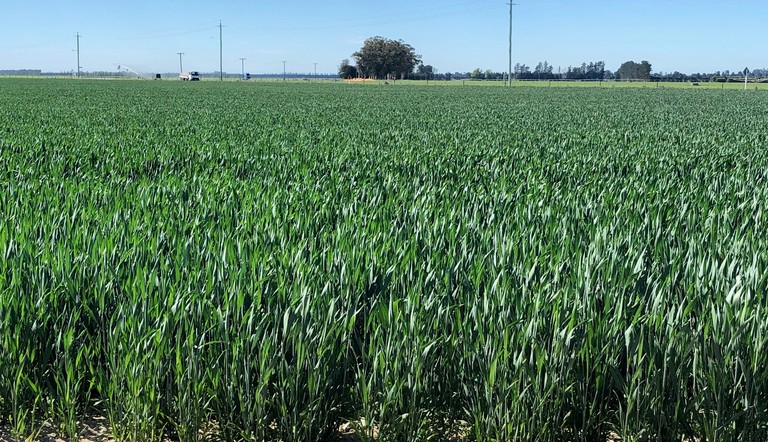
Scourge of UK cereal yields bears down on New Zealand

ADAMA New Zealand introduces Phoenix® and Bolide® to combat increasing Septoria resistance in cereals.
Over a decade ago, the UK and Ireland started to see cereal crop yields taking a hit due to eroding fungicide efficacy. By 2013 Septoria tritici (speckled leaf blotch) resistance was happening in New Zealand. Septoria is acknowledged to be the number one yield-robbing threat in wheat, here and in the UK and Ireland.
A recent visit by Andy Bailey, Technical Specialist at ADAMA UK, and internationally experienced in fungicides development and resistance management, put a spotlight on what New Zealand can learn from the overseas experience. He spoke about his experience and research findings to local agronomists and industry influencers during his week-long stay in Canterbury. With the UK and Ireland already much further down the resistance path, his messages made for uncomfortable listening.
Before 2003, he estimates that the UK and Ireland had between 80-90% control of Septoria. Now Andy says that curative action is as little as 30-40% at best. “We’ve seen a dramatic reduction in the effect of these compounds and because we relied on them so much for curative activity that is a huge problem for us.”
Daren Mabey, Commercial Manager of Adama New Zealand, says Andy’s visit indicates ADAMA’s level of concern about Septoria resistance. “We’ve seen the impact it’s already having here. Sound resistance management strategies and programmes have become imperatives. We’ve lost some sensitivity, and we don’t want it to get to UK levels.”
ADAMA New Zealand are on the ball, combining extensive international knowledge to provide not one, but two new fungicides to help cereal growers fight Septoria this season: Phoenix and Bolide.
Here’s how they work
Phoenix with folpet is a multi-site fungicide. It works against Septoria at multiple sites, making it a low risk for resistance development. Currently there is no known resistance to folpet anywhere in the world. Multi-site fungicides are recommended as the cornerstone for a pro-active resistance management spray programme. Importantly, Phoenix does not interfere with DMI or SDHI uptake.
Bolide is a new all-rounder DMI fungicide with a unique formulation. It works very well against Septoria and provides broad-spectrum control of key wheat and barley diseases including rust, powdery mildew, glume blotch, ear complex disease, and tan spot.
Don’t hang around
Sounds simple? Not quite. As with so many things in cropping, timing is everything.
Septoria has a relatively long latent period, which means crops will be infected long before the tell-tale signs appear.
The best time to apply multi-site fungicides like Phoenix with a DMI such as Bolide is at T1, when leaf 3 emerges. Leave it too late and an infected leaf 3 can transfer the disease to leaf 2 and the flag leaf, destroying green leaf area and compromising yield.
Daren says it is vital getting onto resistance programmes now to help safeguard cereal crops and the efficacy of existing fungicides this season and into the future.
Start future proofing your resistance management strategy and double your infection protection today!
